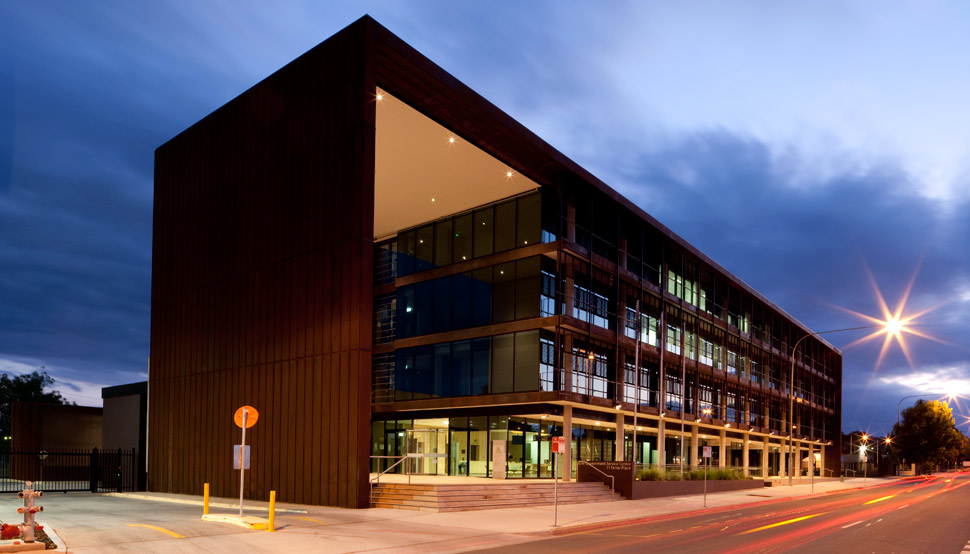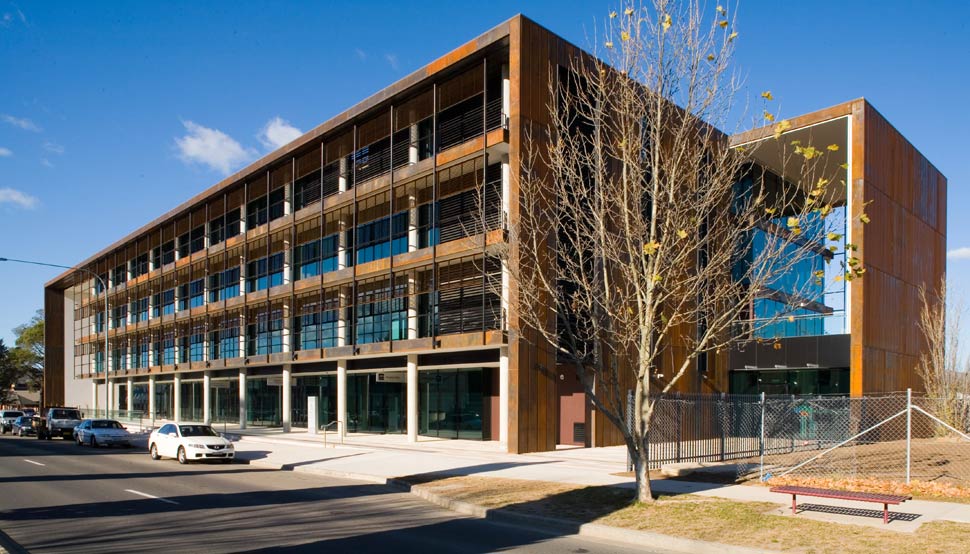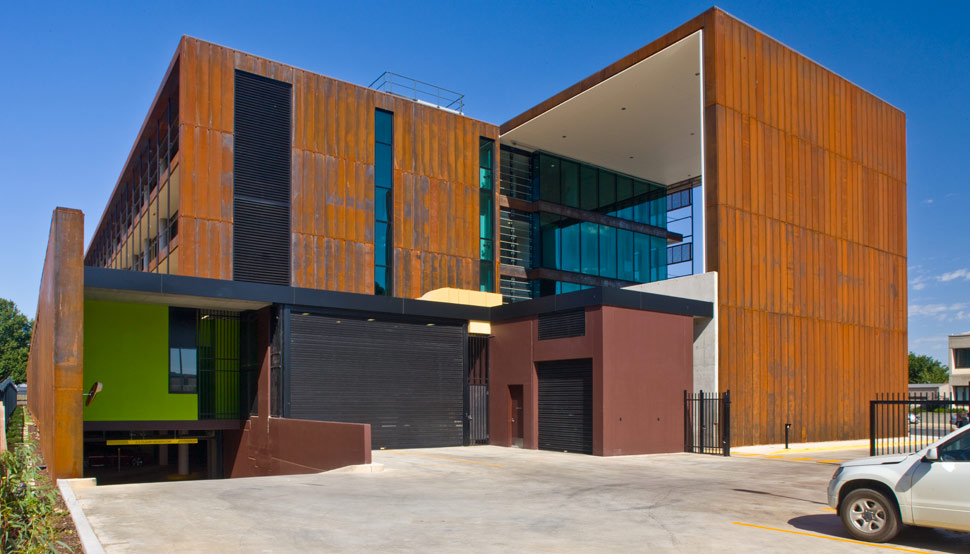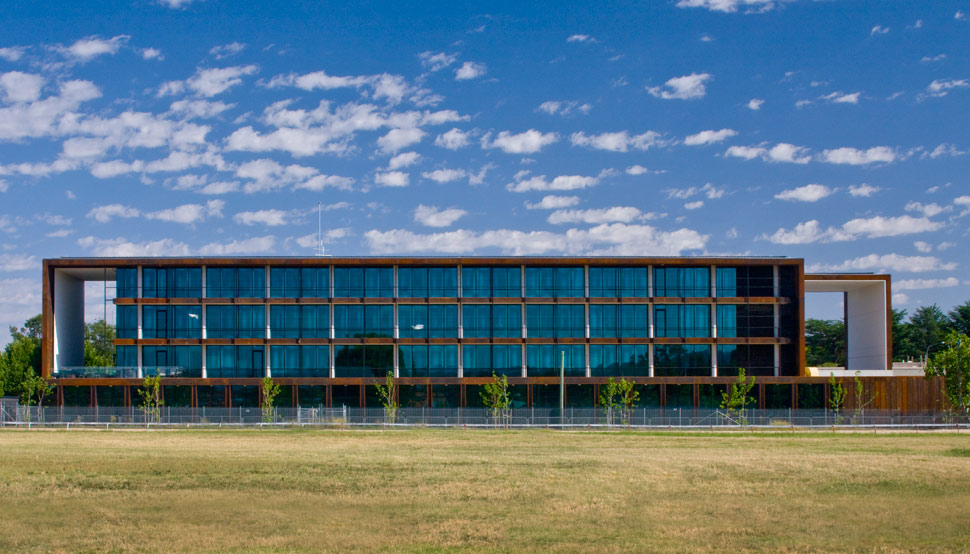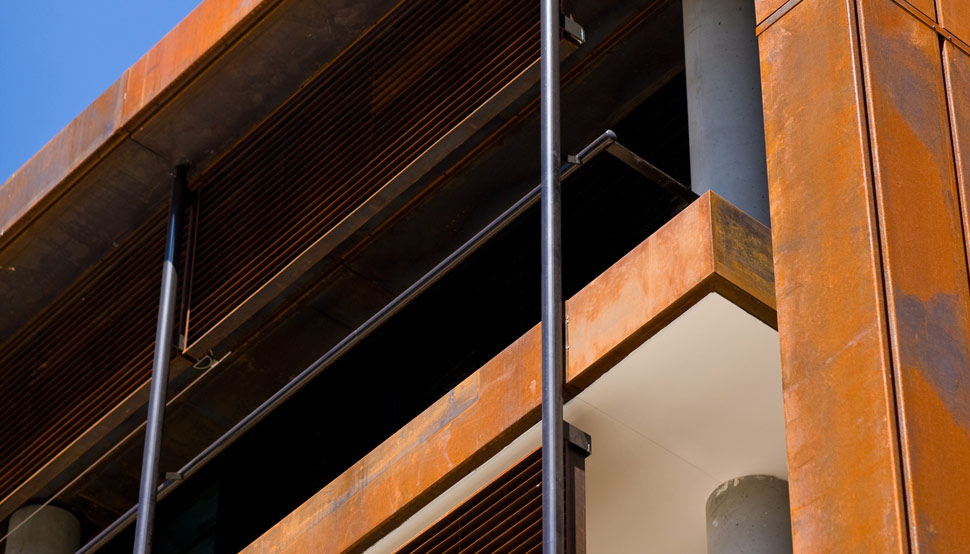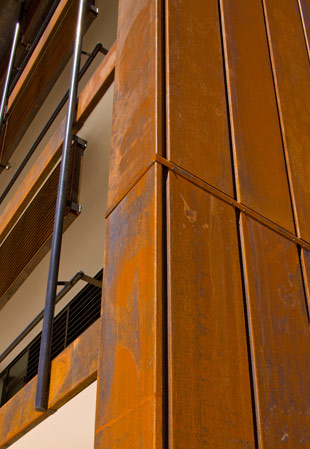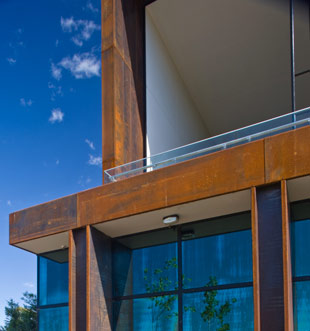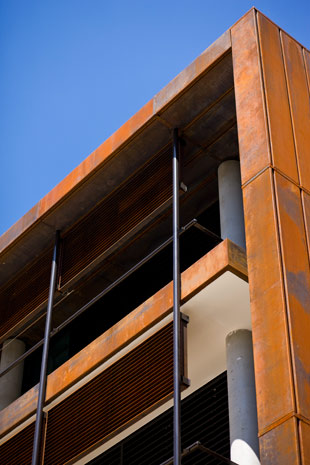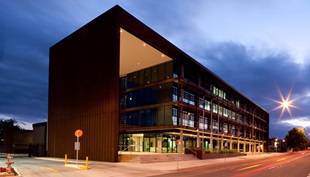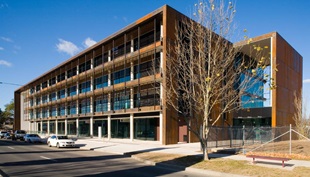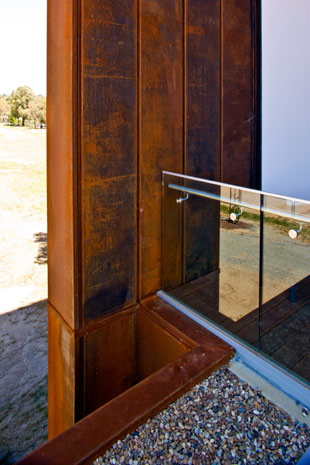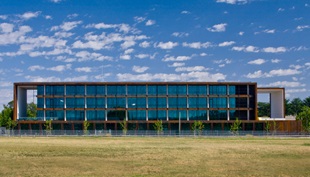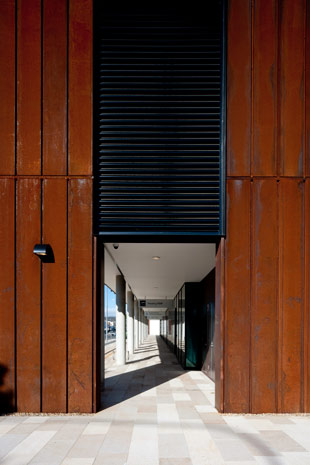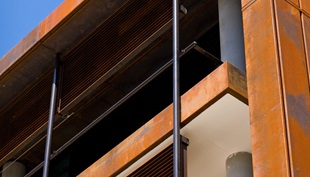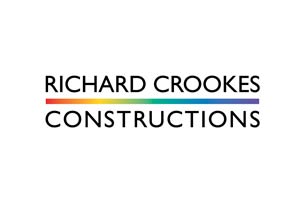NSW Government Service Centre
The strikingly contemporary Government Service Centre in Queanbeyan celebrates the past while looking boldly towards the future.
Credentials:
Client: NSW State Property AuthorityArchitect: Bates Smart
Project Team: Philip Vivian, Simon Swaney (Project Directors), Albert Gregori (Project Architect), Matt Davis (Design Architect), Nicole Milne, Nab Speakes (Architects), Rachael McCarthy, Alice Pennington (Interior Design Leaders), Ezabella Dalla, Jane Smeaton-Duke (Interior Designers)
Builder: Richard Crookes Constructions
Structural: Enstruct Group
Services: EMF Griffiths
Town Planning: JBA Urban Planning Consultants
Steel Fabricator : Dunsteel
Landscape Architects: Turf Design
Awards: 2010 Australian Steel Institute Awards – NSW & ACT: High Commendation in Architectural Steel Design
Gross Floor Area: 7415m2
Total Project Cost: $33 Million
The new Queanbeyan Government Service Centre always had gallant ambitions. As the first in a series of government ‘one-stop shops’ rolled out across New South Wales, it aimed to bolster Queanbeyan’s identity as a major regional centre and herald renewed faith in its future.
Bates Smart Architects Design Director Philip Vivian describes the building as “bold and uncompromising”, and not surprisingly the design raised some hackles when it was first unveiled. Council’s response to the weathering steel cladding – chosen to resemble neighbouring brick buildings – was: “Why not just do a brick building?” During construction debate raged at Council and in the press.
People wanted to know: “When are you going to paint it?”
There were some supporters though. The intendant at the police station opposite liked it, and a local newspaper photographer told an architect at the official opening: “I was sent down here to rubbish the building. But I can’t do it – I love it!”
For this prime location at the gateway to Queanbeyan – alongside law courts, the police station, the police museum and an information centre – the architects always intended to create a modern building, but they wanted to respect the town’s scale and character as well. The aim, Vivian says, was to build “something which is both civic, but also of its place”.
The building is set back from the street and boasts an elevated forecourt and over-scaled ‘verandah’ at its entry. The great visual gesture is the folded roof planes, which both define the building and break up its mass, allowing it to engage with the landscape and its urban context.
The cladding is BlueScope XLERPLATE LITE™ HW350 steel, custom folded using the sheet dimensions. The sheets are held together using horizontal welded joints, in this case butt joints, with a flashing to allow for expansion. The overall process minimised wastage, reduced downtime on site and eliminated the hazard of metalworkers having to weld up in the air.
The use of naturally weathering steel achieved several objectives: its tough appearance echoes the rugged and windswept Monaro Plains and, over time, its patina has matured to resemble the historic brick buildings of Queanbeyan. It also requires very little maintenance, no paint at all in fact.
The innovation in this project, according to Vivian, is not so much the use of weathering steel, but in its “correct detailing and how the building was constructed”. For example, it minimises run-off from the sheets in areas that might affect the public. And on the street facade, customised weathering steel louvres are angled down and bolted to fine mild steel vertical pipes which – along with the slender off-form concrete columns – form a filigree that references Queanbeyan’s historic verandahs.
Internally, these verandah-like spaces benefit from overhanging slabs from the floor above to reduce heating and cooling loads on the floor-to-ceiling glazing, while the public and break-out spaces are mixed-mode to allow for natural ventilation.
The steel elements help to achieve multiple strategies on this project, including environmental, aesthetic and sustainable. Most of all though, the changing surface and materiality of the weathering cladding sets up an impressive counterpoint of colours and textures that firmly places the building in its context. It’s an iconic building that has indeed helped to create a new focal point for historic Queanbeyan.

